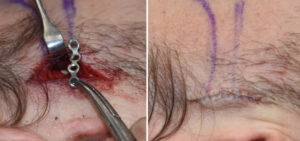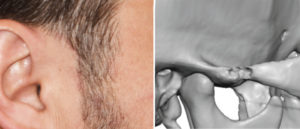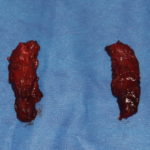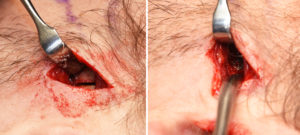Facial width reduction can be done by a variety of bone reshaping surgeries. Cheekbone osteotomies are a common techniques for reducing midfacial width. This is done by a combined anterior osteotomy done intraorally that goes through the main body of the zygoma and a posterior osteotomy done externally through the temporal process of the back end of the zygomatic arch. (or the zygomatic process of the temporal bone) This then allows the entire width of the cheekbones to be moved inward and stabilized with small plates and screws.





Dr. Barry Eppley
Indianapolis, Indiana





